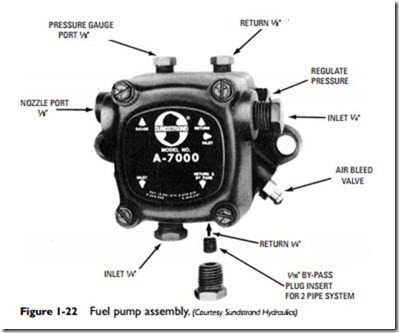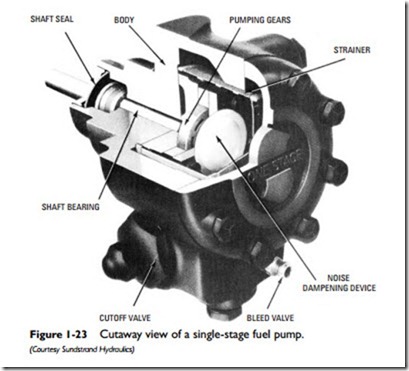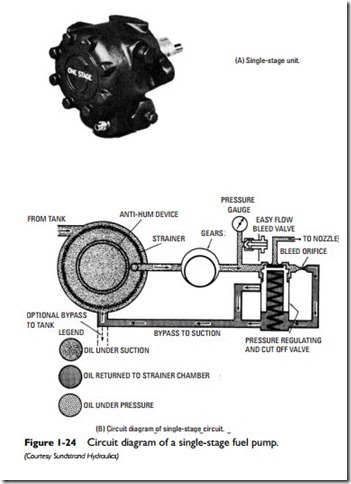Single-Stage Fuel Pump
A single-stage pump contains only one set of pumping gears (see Figure 1-23). These pumps are commonly used in single-pipe gravity- feed installations or two-pipe installations under low-lift conditions with up to 10 inches of vacuum. The following are the principal com- ponents of a single-stage fuel pump:
1. Pumping gears.
2. Cutoff valve.
3. Strainer.
4. Shaft seal.
5. Noise-dampening device.
6. Shaft bearing.
7. Body.
8. Bleed valve.
The fuel oil first enters the unit by passing through the strainer, where foreign particles such as dirt and line filter fibers are removed. The fuel oil then moves through the hydraulically balanced pumping gears and is pumped under pressure to the valve (see circuit diagram in Figure 1-24). The pressure forces the piston away from the nozzle cutoff seat, and the fuel oil then flows out the nozzle port. Oil in excess of nozzle capacity is bypassed through the valve back to the strainer chamber in a single-pipe system or is returned to the tank in a two-pipe system. Pressure is reduced on the head of the piston when the pump motor is shut off. At this point, the piston snaps back, causing the nozzle port opening to close. A bleeder valve opening in the piston provides for automatic air purging on a two-pipe system, providing for fast cutoff.



